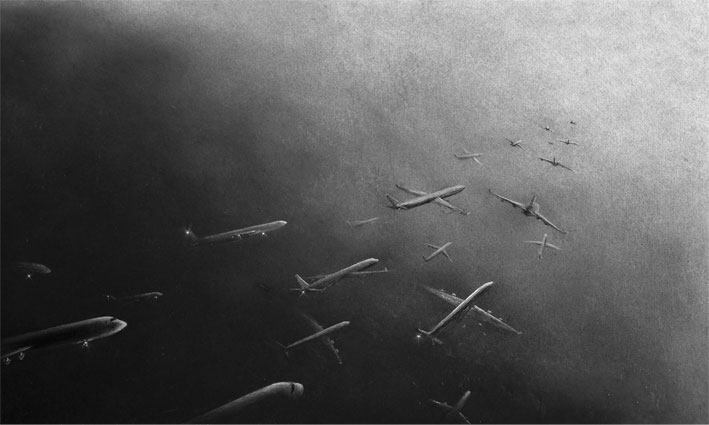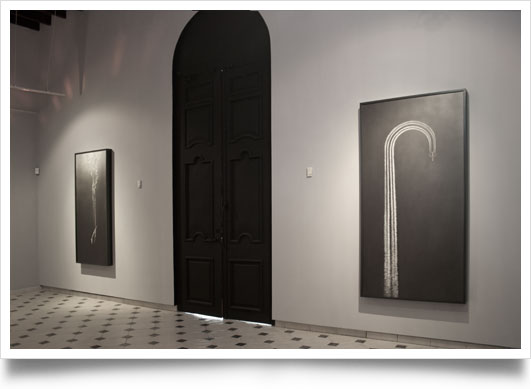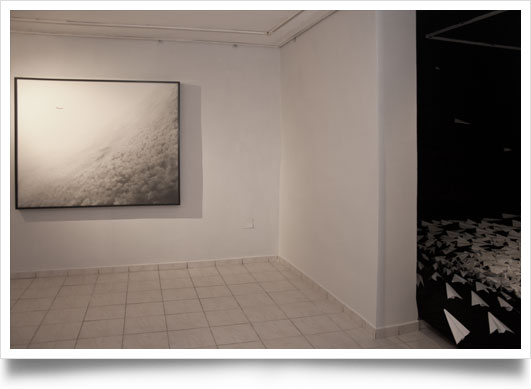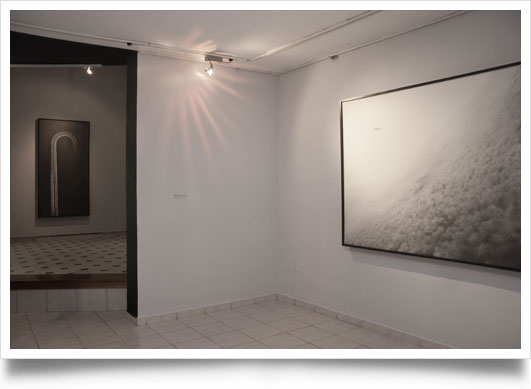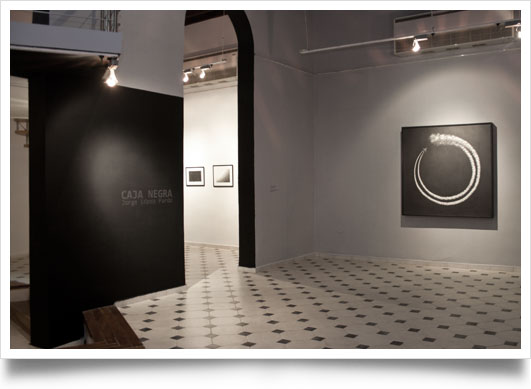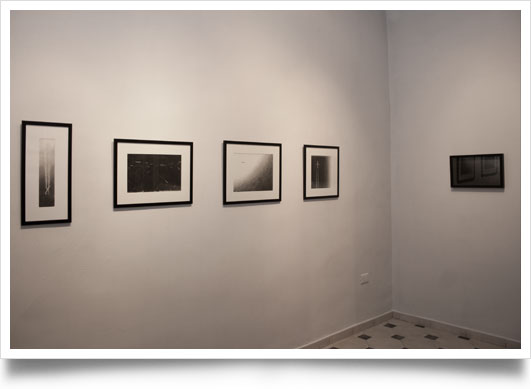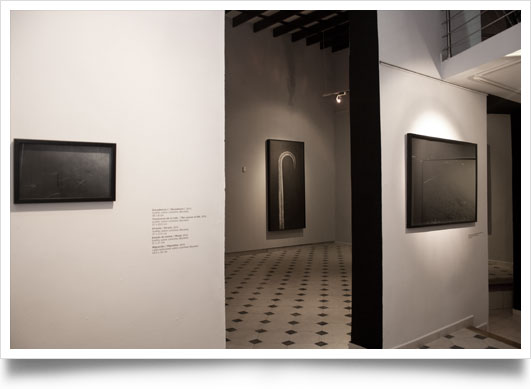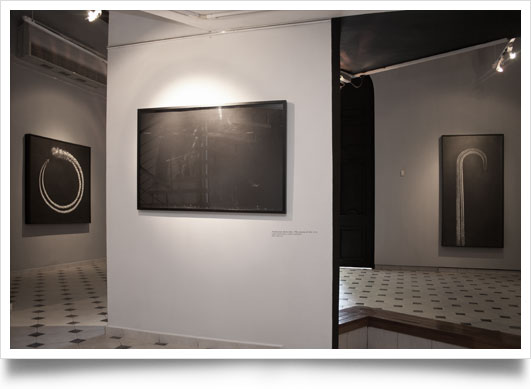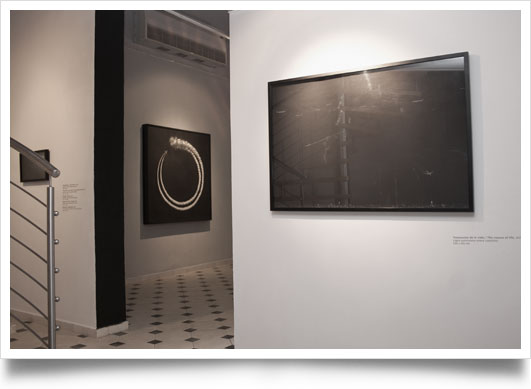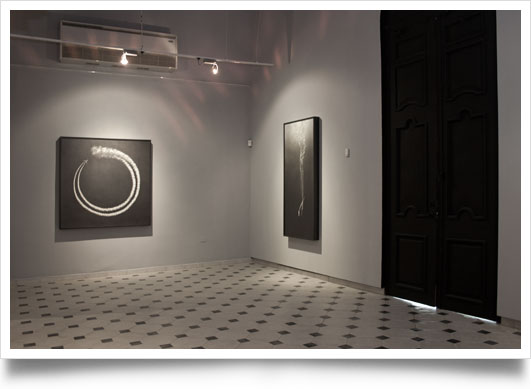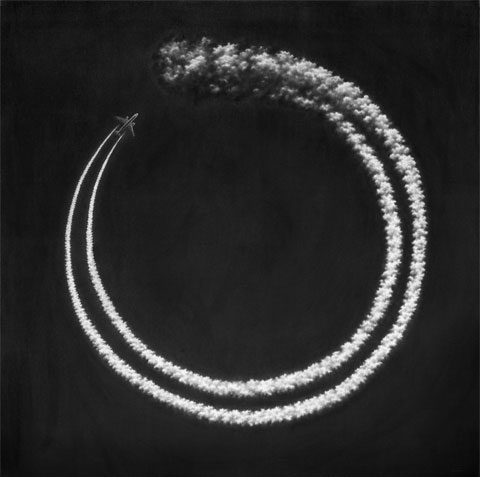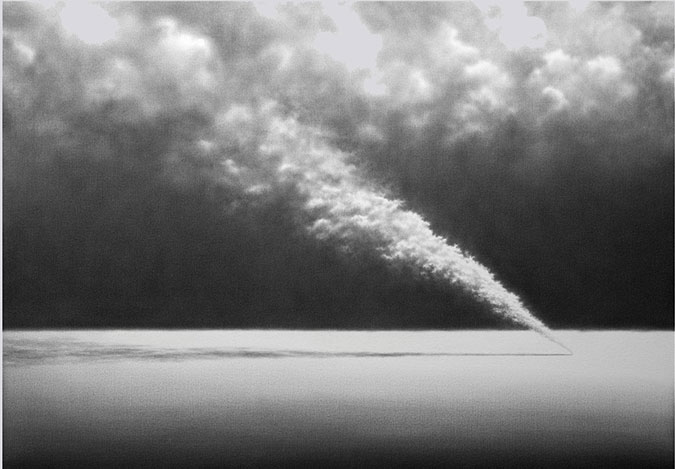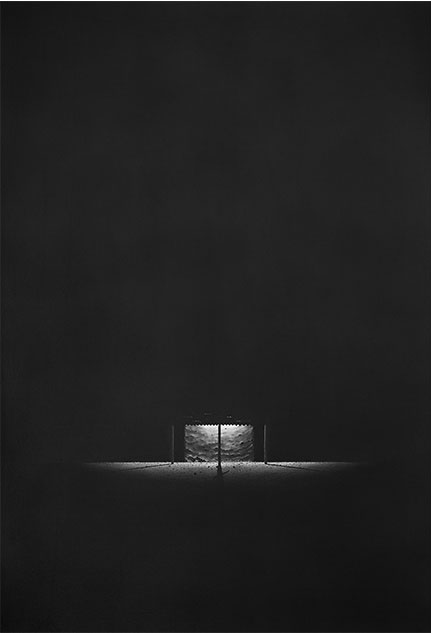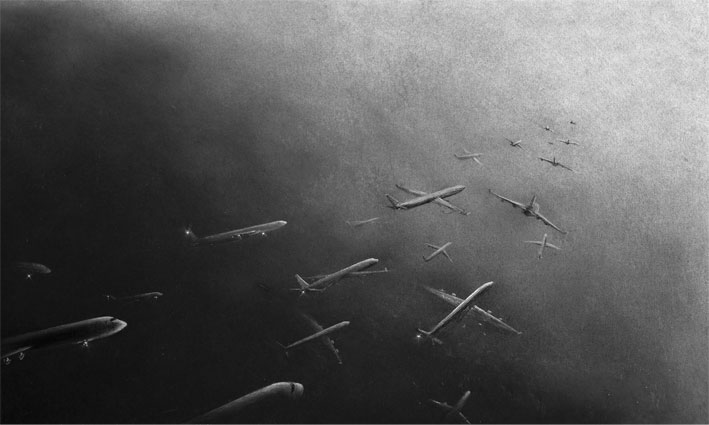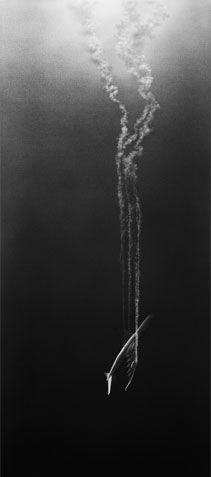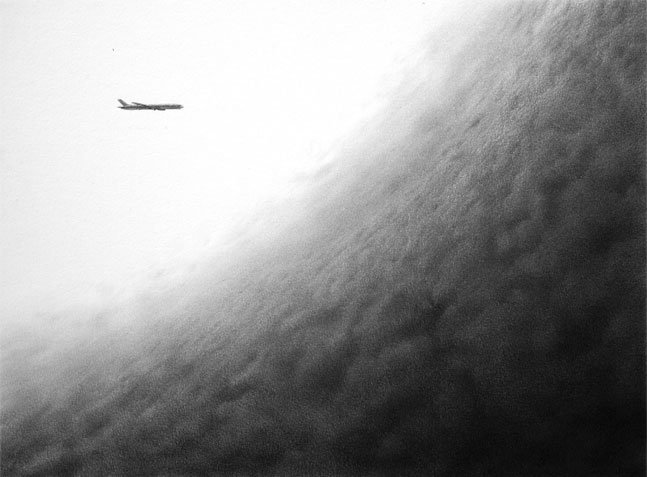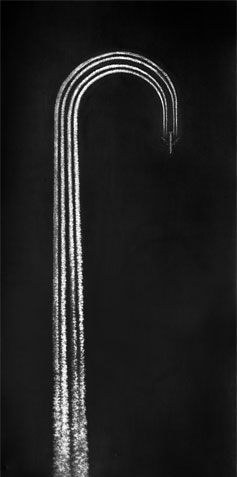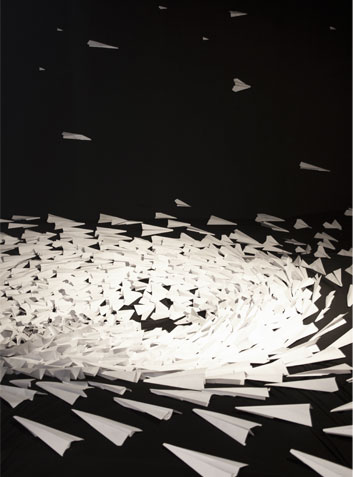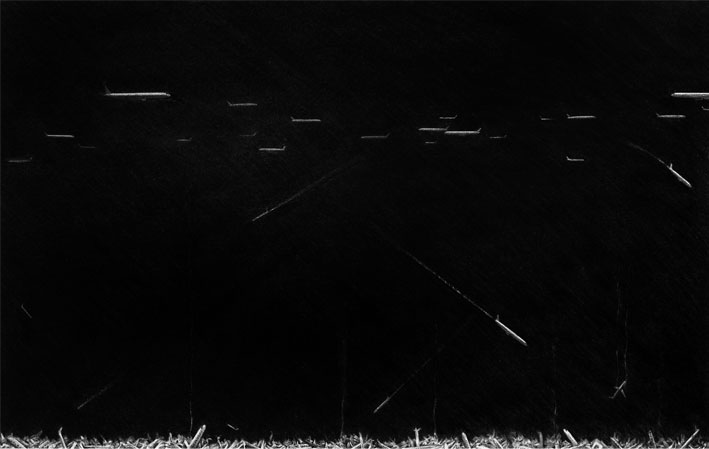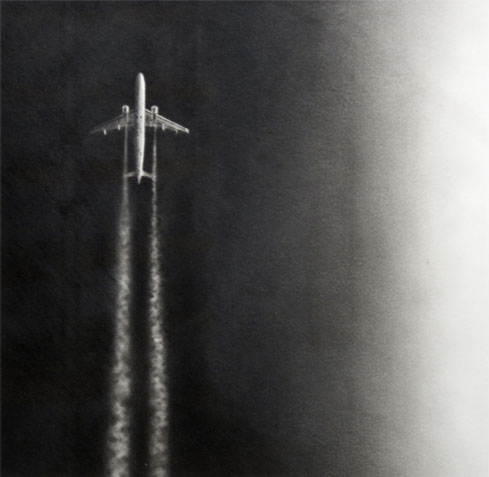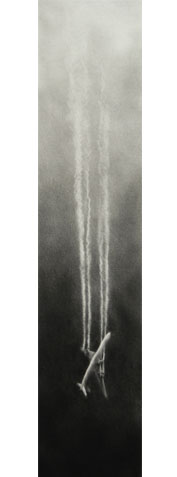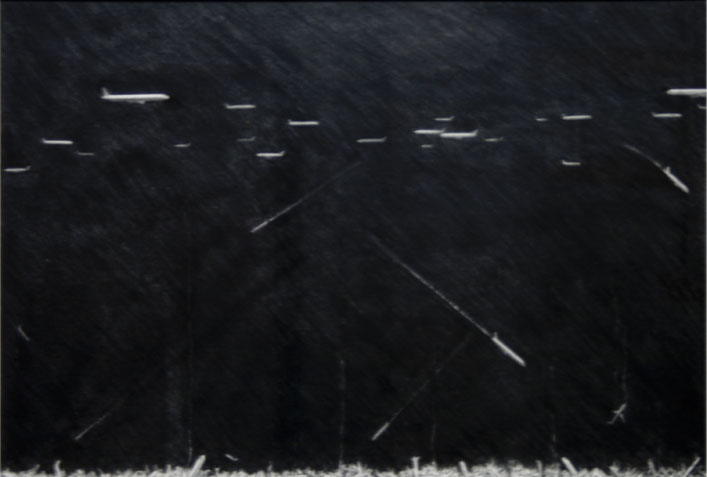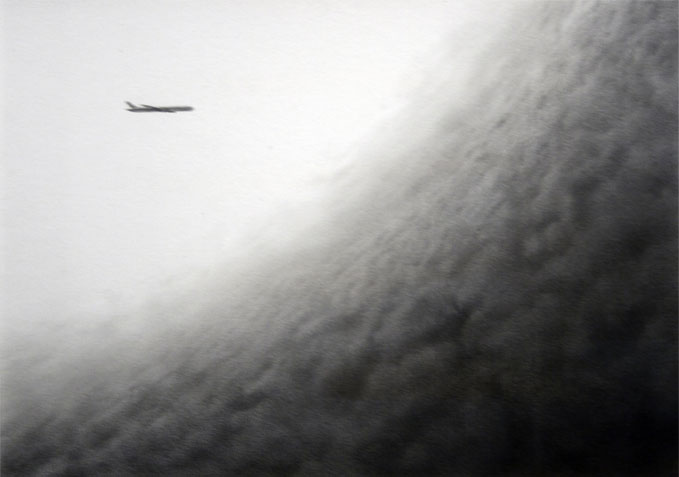Black box
Itineraries
(Text fragments)
LOPEZPARDO became known in Cuba by an art form attached to earthly metaphors and bucolic shades that sharpened its distrustful and telluric side with each new proposal and composition. It was this aspect that most contributed to his credibility and validation within the painting circles, making his work gain different perceptions and interpretations beyond the limits of the landscape genre for which he is most frequently judged.
I guess the reasons for such a defined modality originated in the demands of collectors and the gallery circuit to which he was linked both in Cuba and abroad, and by the strategies traced for him by those conducting the projection and commercialization of his work. As a result of that process, up to a given moment LOPEZPARDO meant darkness and silence, the emptiness of natural spaces and the isolation of the rural hut. Not even the impact of the accidental revelation of one or the other canvas or installation assumed from a different conceptual and figurative angle succeeded in erasing that characterization we had of his work, that coined vision of authentic landscape artist -in the best sense of the phrase- that we had developed about his work.
The exhibition Caja negra (Black Box) now being presented at Villa Manuela Gallery (UNEAC) somehow helps to enrich the concept of integrity we might have about LOPEZPARDO’s work. It would even be lacking objectiveness if we did not include as part of that updated analysis of the period, next to his work for Villa Manuela, an installation proposal as close in time as the one entitled Capital Humano (Human Capital), presented at Morro Cabaña during the Eleventh Havana Biennial, where he evidences that the substrate of all his creative options -both direct or subtle, moderate or provocative- is the constant concern for humankind and its circumstances.
I must admit that becoming acquainted with the works in this exhibition has been quite beneficial for me, since it has provided not only the opportunity to reflect and write these words to the catalogue (part of a far-reaching text I shall publish shortly), but to meet the artist, inquire more deeply into his career and valuate other formal and conceptual aspects of his work. I even think that the term modify is not the most adequate one to describe the rounding off I have experienced in the perception and analysis of his painting, since his ideas and expressions, and his excellent work method with graffito on canvas -all of which I had previously analyzed and verified- are sufficient arguments to make up a favorable valuation of his activity and premises.
The change of atmosphere that goes from earthly to aerial, from secular to cosmic and the penchant toward a metaphor that is less dependent of the own country are the first signs that stand out in Caja negra. A change already induced in previous groups of works, but now emphasized with new codes and compositional suggestions and boosting particularly the image of the aircraft, a resource repeatedly used by our plastic artists both bi-dimensionally and volumetrically in different art forms (why refuse that privilege granted us by the perpetual insularity?), but still not exhausting its many representative and allegorical pretexts True that the airplane was premiered symbolically in the piece Avistamiento II (study) from 2006, but its leading role now displaces the telluric airs of his best-known painting, reducing a bit the rural mysticism and increasing the observation, all of which grants his work a somewhat more socializing and ecumenical nature.
The scenes of this new production refer us to vague environments deprived of any resource of orientation. They are sometimes so impenetrable that they seem to have some analogy with the well-known black holes, and just like these astronomic phenomena they produce the illusion of deducing a series of uncertain routes and destinations. The paintings that make up this series also originate an interesting playful meaning in which both author and spectators may be constantly reordering the points of view, the logical structures of dimension and location. An overview that today is exhibited from one point tomorrow might be located in another, constantly alternating its inductive capacity. It all depends of the levels of reading and the mental situations.
The airplane image refers explicitly to the swiftness of modern life, to the human being dependent of high technologies. But when the airplane image is inserted in those infinite and cosmic places where the notions of direction and altitude are lost and the borders between black and white, light and darkness dissolve (some spectators might think they are night flights); when that image is placed in such an angle that it seems to be observed by an omnipresent eye, then the metaphorical implications of the machine, its meaning in our age remain in the background, and it is the gas expelled by the motors, the detail enhancing the contents that reinforces the discursive meaning of the piece, the one that tells of the modern man with his fleeting existential itineraries, with his sudden ascensions and precipitated falls, events that are extremely difficult to register, to inquire about from the testimonial and symbolical sphere. Hence the figurative use made by LOPEZPARDO of the term Caja negra alluding to those embarrassing living experiences entailed at present by the majority of ratification or evidencing processes.
In previous series by LOPEZPARDO that have not been totally abandoned, greater emphasis is made in the importance of conjuncture; there is a reference to a living standard; ideas with greater insular echoes are expressed, attached to the principle of eventuality (the implementation of gloomy, almost apocalyptical spaces, and the re-contextualization of emblematic objects or constructions of the Cuban reality such as rural huts, lighthouses, bridges, wooden crates and even persons piled up as merchandise are crucial in it) However, in these new paintings at Villa Manuela a commentary that is more focused toward a generic, far-reaching living circumstance seems to have been introduced, a fluctuation of expectations and situations caused by the weight of submission or social autonomy.
These almost minimal canvases, like other previous ones, still implement their allegorical discourse based on two exclusive elements: object and space. In them, the artist remains faithful to his principles of soberness and synthesis, to his concept about the link, the correspondence between iconographic and discursive transparency. LOPEZPARDO is not one of those creators who assume cynically or with arrogant indifference the possible implications of the interpretations of their works. He bets unprejudiced for the need of eloquence and persuasion in the work of art, and focuses all his conceptual and representative efforts in trying to optimize them.
David Mateo
Havana, 2012
Artworks
Last breath
Jorge López Pardo 2014Luz propia (Self light)
Jorge López Pardo 2013Routine
Jorge López Pardo 2012Errant
Jorge López Pardo 2012Decadence II
Jorge López Pardo 2012Sueños (Dreams)
Jorge López Pardo 2012The course of life
Jorge López Pardo 2012Mood (sketch)
Jorge López Pardo 2012Decadence I (sketch)
Jorge López Pardo 2012The course of life (sketch)
Jorge López Pardo 2012Errant (sketch)
Jorge López Pardo 2012Migration (sketch)
Jorge López Pardo 2012Artists
